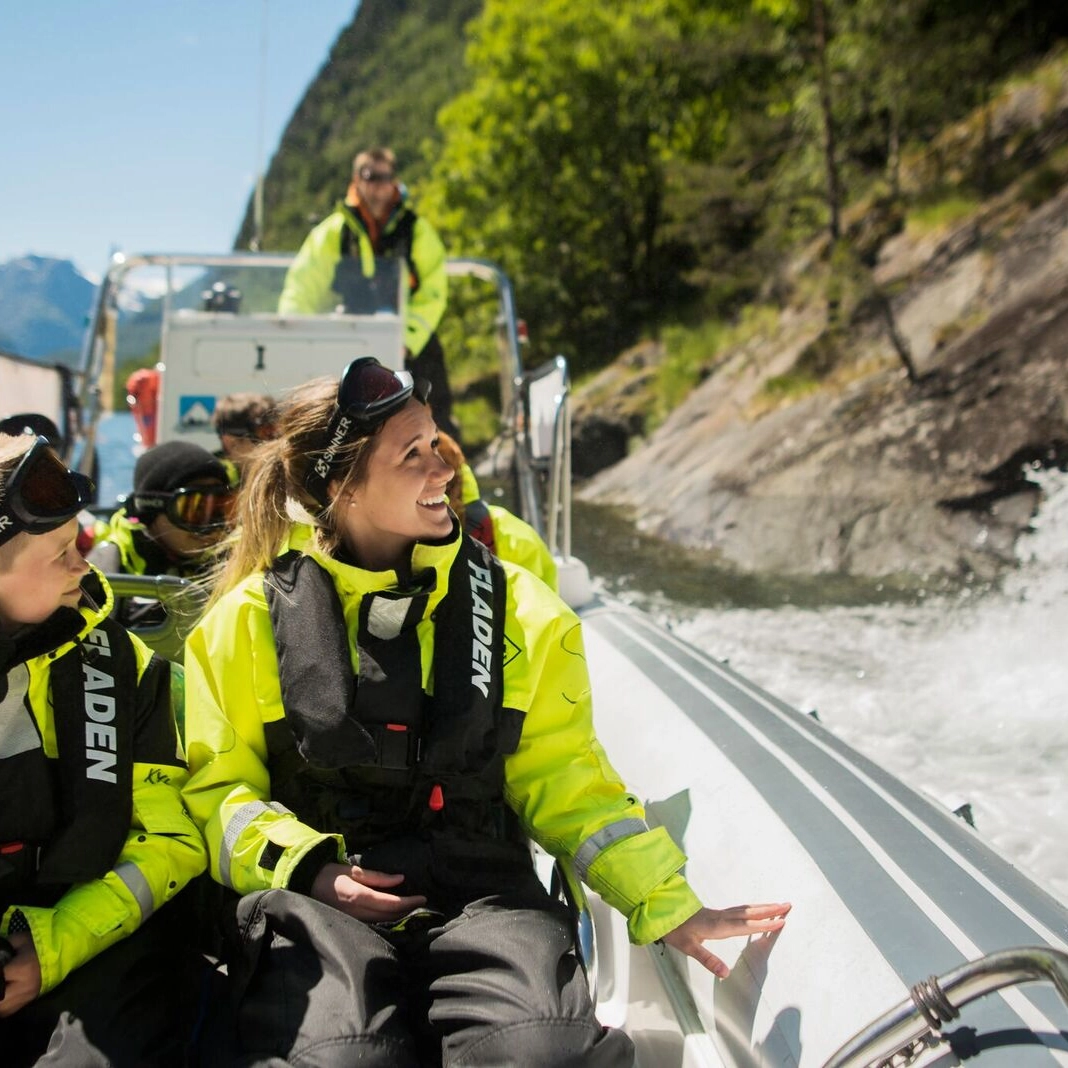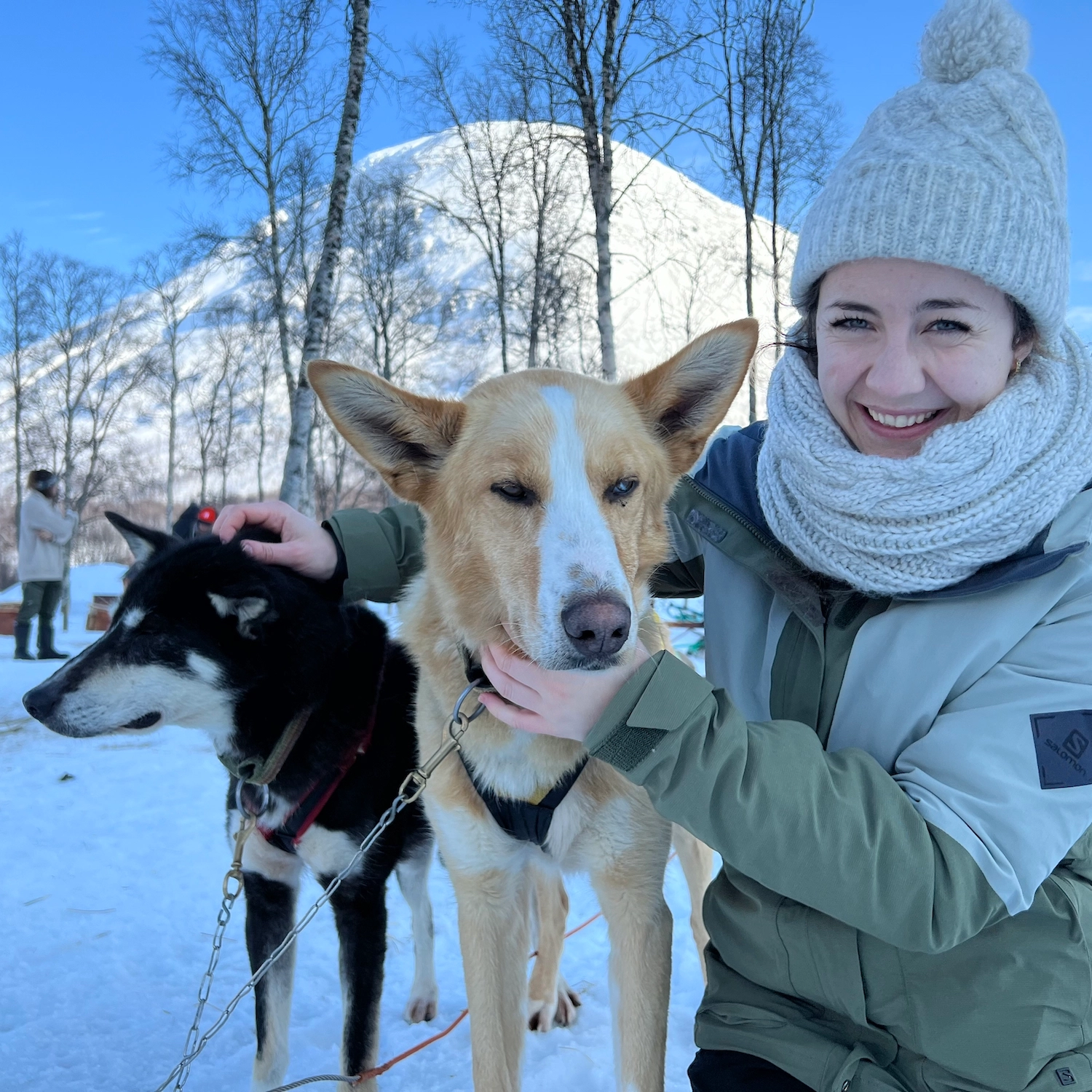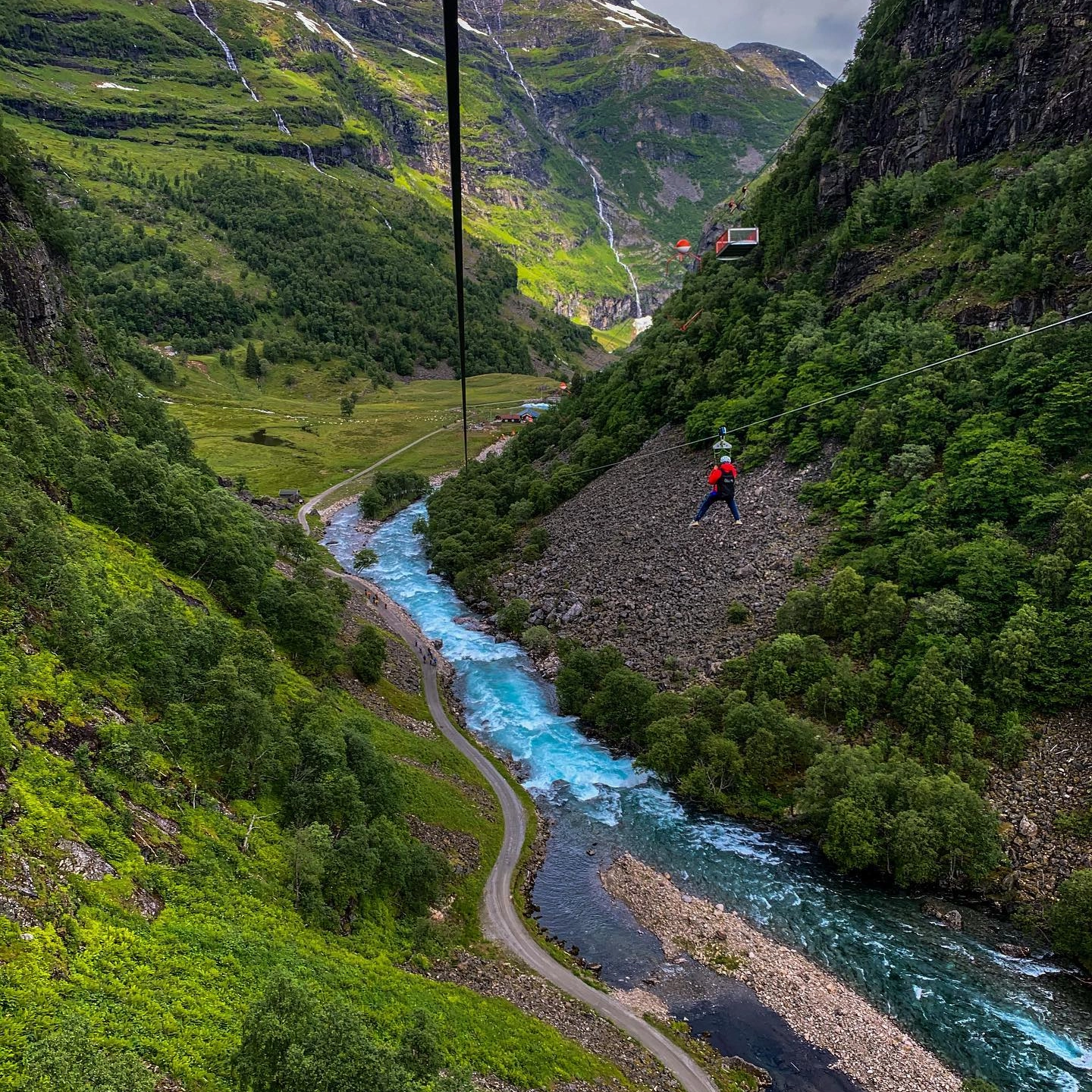What is a glacier?
If you’re thinking of taking a trip to Norway, you may have seen that the country has many glaciers – and many fascinating glacier walks and experiences available to interested visitors. In this article, we’ll give you an overview of what glaciers actually are, how they were made, and tell you a little bit about how you can explore Norway’s magnificent glaciers.

What is a glacier?
A glacier is a vast mass of ice that moves very slowly over land, and glaciers are often referred to as “rivers of ice”. Glaciers cover about 10% of the land area on Earth. Some glaciers are thousands of years old – in fact, glaciers are considered remnants of the last ice age, and it was these ancient glaciers that shaped Norway’s well-known fjords and valleys all those years ago.
The word “glacier” comes from the French word ‘glace’, which translates to ‘ice’. The Norwegian word for ‘glacier’ is ‘isbre‘, and the plural is ‘isbreer‘ – so now you know what words to look out for when you visit!

What is a glacier made of?
Glaciers are made of ice and can be several miles long. A glacier consists of several layers of snow that over a very long period of time are gradually compressed into ice. Glaciers are a natural part of our world, and will therefore change depending on the circumstances around them – in Svalbard, glaciers expand during the winter and get smaller in the summer.
How is a glacier formed?
Glaciers form when large amounts of snow stay in the same area all year round so that each new layer of snow is added on top. The new layers of snow begin to compress the previous snow layers, forcing the snow to re-crystallize.

What is the difference between a glacier and an iceberg?
While glaciers are large sheets of ice that move very slowly, icebergs are smaller pieces of ice that have broken off from the glaciers. Icebergs usually drift along the ocean currents, while glaciers, which are much bigger, seem more stationary. In fact, glaciers are always moving, but at a slow pace of just centimeters per day.

Are glaciers common in Norway?
In Norway, the fascinating natural phenomenon of glaciers is a fairly common occurrence. In fact, there are 2534 registered glaciers on mainland Norway, in addition to 2100 glaciers on Svalbard. Norway has the most glaciers of any European country, and an estimated 1% of mainland Norway is covered by glaciers.
Faced with increasing temperatures due to global warming, glaciers around the world have begun to slowly melt. This has led to interesting pre-historic finds, such as the recent discovery of the world’s oldest pair of skis in the deep Digervarden ice patch – but it is also a worrying trend. The Center for International Climate Research has found that 326 km of Norwegian glaciers have disappeared since the 1980s.
Making sustainable choices as a traveler will go a long way towards reducing carbon footprint and preserving natural wonders like the glaciers, and there are plenty of ways to explore glaciers in an environmentally-friendly way.

What are the largest glaciers in Norway?
The largest glacier in Norway is Jostedalsbreen, which is also the largest glacier in mainland Europe. Stretching across 487 km, the huge glacier is a part of the famous Jostedalsbreen National Park. The Jostedalsbreen glacier is split into more than 50 glacier arms branching out, including Briksdalsbreen. Located in the beautiful Briksdalen valley, the Briksdalsbreen Glacier is one of the most popular destinations to visit in Norway and is also known as the Olden Glacier.
The second-largest glacier in Norway is Svartisen, which stretches over 370 km. Located in the wild natural landscape of Saltfjellet-Svartisen National Park in Nordland, Svartisen Glacier actually consists of two glaciers.
Folgefonna Glacier is another popular tourist destination for those looking to explore the ancient mysteries of the ice. Folgefonna is a glacier located inside the beautiful Folgefonna National Park, near Odda in idyllic Hardanger. Here, you can explore the natural landscape with a glaciar hike setting off from Bergen or a unique kayak adventure!
These beautiful natural phenomena offer fantastic experiences and views, and there are plenty of opportunities for fantastic glacier hikes along these and other Norwegian glaciers.

Explore the ice with a glacier walk
Glacier walks are a unique and fascinating outdoor activity that is actually quite common in Norway. Though it may sound a little scary, glacier walks are actually perfectly safe as long as you take precautions. You should never venture out on the ice alone since glaciers can be dangerous – the right way to explore a glacier is on a tour with a knowledgeable guide, and equipped with all the necessary safety equipment.
Glacial walks are well-suited to adventurers as well as families with kids. Hiking along an ancient glacier in Norway is a truly unforgettable experience and a Nordic adventure like none other so be sure to check out our glacier hiking adventures.

Thrill seeking activities

Best seller
Heritage RIB-boat tour in Flåm
Flåm • 2 hr 15 min
From 1060NOK
Available 1 April - 31 October

Canyoning in Valldal
Valldal • 3 hr
From 1399NOK
Available 1 August - 30 September

Dog sledding in Tromsø
Multiple locations • 7 hr
From 2290NOK
Available 1 December - 31 March

Sea eagle safari to the Trollfjord
Svolvær • 2 hr
From 995NOK
Available all year

Romsdalsstigen via ferrata - Intro wall
Åndalsnes • 4 hr
From 1150NOK
Available 1 June - 20 October

RIB boat tour in Ulvik
Ulvik • 1 hr 45 min
From 795NOK
Available 19 May - 15 September

In high demand
Flåm Zipline, Flåm Railway and bike ride
Flåm • 4 hr
From 1802NOK
Available 3 May - 11 October

Romsdalsstigen via ferrata - West wall
Åndalsnes • 5 hr
From 1695NOK
Available 1 June - 20 October

Best seller
Heritage RIB-boat tour in Flåm
Flåm • 2 hr 15 min
From 1060NOK
Available 1 April - 31 October

Canyoning in Valldal
Valldal • 3 hr
From 1399NOK
Available 1 August - 30 September

Dog sledding in Tromsø
Multiple locations • 7 hr
From 2290NOK
Available 1 December - 31 March

Sea eagle safari to the Trollfjord
Svolvær • 2 hr
From 995NOK
Available all year

Romsdalsstigen via ferrata - Intro wall
Åndalsnes • 4 hr
From 1150NOK
Available 1 June - 20 October

RIB boat tour in Ulvik
Ulvik • 1 hr 45 min
From 795NOK
Available 19 May - 15 September

In high demand
Flåm Zipline, Flåm Railway and bike ride
Flåm • 4 hr
From 1802NOK
Available 3 May - 11 October

Romsdalsstigen via ferrata - West wall
Åndalsnes • 5 hr
From 1695NOK
Available 1 June - 20 October